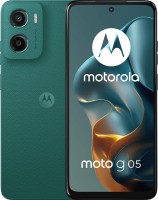The middle class we deserve: TOP 5 midrange smartphones
We independently test the products and technologies that we recommend.

The characteristics and prices of the models from the selection can be compared in the summary table of average smartphones. It is offered to choose the most suitable "handset" for yourself in the full catalog of smartphones. And all the articles from the section "Mobile phones" are available at the following link.

Asus smartphones occupy, albeit not a large, but stable niche of the mobile device market. The Asus ZenFone Max Pro M1 ZB602KL is designed to raise the position of the Taiwanese brand to new heights, which managed to surprise the audience with an optimal balance of characteristics.
The design of the model turned out to be, frankly, inexpressive. However, if you look deeper, without taking into account the external "wrapper", the main trump card of the device appears to the eye — the "iron" combination of the Snapdragon 636 octa-core, 4 GB of RAM and the Adreno 509 GPU. With such a hardware, the smartphone is equally good at everyday tasks, as well as most modern games without fps sagging in long battles. In addition, the gadget is running a "clean" Android 8.1 OS, supplemented with some useful proprietary functions.
The front side of the smartphone is occupied without a hundredth of a 6-inch screen based on an IPS matrix of FullHD+ format (2160 x 1080 pixels). Fortunately, he doesn't have annoying "bangs", but at the same time, the frames on top and bottom of the display can't be called small. The whole thing is "packed" in a case with dimensions of 159x76x8.5 mm. With such a modest thickness, Asus ZenFone Max Pro M1 ZB602KL got a capacious 5000 mAh battery, on a full tank of which the device keeps "afloat" for over 12 hours of display activity. A result worthy of respect.
In terms of photographic capabilities, the model uses a popular technique with a dual main camera. The lion's share of tasks is shouldered by 13 MP of the leading photomodule, and a 5 MP auxiliary sensor is provided to help him measure the depth of field of the frame when shooting in portrait mode. However, the quality of the background blur "out of the box" turns out to be so—so — the "damp" software affects. An 8 MP front camera is installed in front for shooting self-portraits. Also on board the smartphone there is a full set of communications, including an NFC chip for wireless payments. What happens in the dry residue? The answer is quite obvious — an ardent competitor to the hordes of mid-low-cost Xiaomi and Meizu with a decent hardware base, stock Android and another distinctive feature in the face of a triple tray for 2 SIM and a microSD memory card.

The glass giant under the sign of the Honor brand (the "daughter" of the Chinese company Huawei) looks more expensive than it really is, and impresses with a good performance ratio along with the richness of the decoration. But let's not get ahead of ourselves and put the whole background of Huawei Honor 8X on the shelves.
When you get acquainted with a smartphone, the "wow" effect involuntarily arises — the glass backdrop of the device, divided into two parts, looks so unusual and bright, shimmering in different tones in the light. The 6.5-inch diagonal screen reinforces the positive impression about the gadget of huge size. It is "decorated" with a trending monobrow, which has built-in proximity and lighting sensors, a conversational speaker and a 16 MP selfie camera with a maximum aperture of f/2.0. The image is broadcast on the display in a resolution of 2340 x 1080 pixels, which provides a final pixel density of 396ppi.
In the "under-hood" space of Huawei Honor 8X, an 8—core Kirin 710 chip is installed — almost similar in computing power to the eponymous "dragon" from Qualcomm. Tasks in the manner of multimedia content consumption, gatherings on the Internet and communication in social networks, the smartphone "clicks" like seeds, and especially for games in the assets of the model, a proprietary GPU Turbo mode is provided (graphics acceleration is not at the expense of the battery charge). The standard drive in the arsenal of the device has a volume of 64 GB, after which the user is invited to resort to the services of a triple slot for a pair of "Sim cards" and a microSD card.
The main camera of the smartphone, as usual, unites two photo modules under its wing: 20 MP lead and 2 MP to help him draw bokeh. The camera has acquired the support of artificial intelligence, which is engaged in the recognition of scenes and objects in the frame for automatic selection of the most suitable settings for the filming plot.
The weak point of the model was only the sound quality. However, against the background of other "buns", this defect can be completely neglected. Moreover, the brainchild of Honor offers to take advantage of all the charms of contactless payments through the built-in NFC chip, and also provides the owner of the device with progressive ways to unlock the gadget — in addition to the fingerprint sensor, the smartphone is able to boast of the face recognition system put into service.

The highest levels of the hierarchy of Xiaomi smartphones are traditionally occupied by Mi series devices. The eighth generation of the top line was diluted with a simpler version — a device with serious flagship ambitions Xiaomi Mi 8 SE.
The smartphone is a kind of "golden mean" between Pro-level gadgets and middle-class devices. He became the first among his peers to get a Snapdragon 710 chip as a CPU, which is only a little behind in performance from the current generations of top-end "dragons". In the AnTuTu synthetic test, a bundle of a chip, 4 GB of RAM and Adreno 616 graphics scores over 168K. points, which indicates a decent margin of performance of "iron" for the future. There is also a version of the model with 6 GB of RAM, which has an even higher "flight" speed. The volume of non-volatile memory on board the mobile gadget is 64 GB and, alas, the capacity of the regular storage is not subject to further expansion.
The appearance of the smartphone is dominated by angular features, which will appeal to adherents of the so-called Sony-style. In general, the case of the device is made in the form factor of a glass "sandwich" with a 5.88-inch AMOLED display at the head. The picture is displayed on the screen in an atypical resolution of 2244 x 1080 pixels, which is done for the sake of a big bang. From it, the user is "spied on" by the object of a 20 MP selfie camera, which can "click" portraits with background blurring and recognize the owner of the device by face, giving him access to all the functions of the device. At the same time, the smartphone is equipped with a fingerprint sensor on the "back" in the old-fashioned way.
The photographic side of the issue Xiaomi Mi 8 SE is a tandem of 12 + 5 MP cameras with support for artificial intelligence, HDR and other "tricks", sharpened to obtain the highest quality result. But with an NFC chip — almost an obligatory attribute of a good modern smartphone — for some reason the model did not work out, as well as with the dust and water protection of the case. As a moral compensation, the user is provided with an IR port for remote control of home appliances and fast charging of a 3120 mAh battery, on one charge of which a day of battery life of the device is stably provided. In the ratio of price/ quality / optimal size, Xiaomi Mi 8 SE completely devours its closest rivals, which attracts close attention.

Samsung receives the main stream of profit from the sale of smartphones thanks to the "tough nuts" of the middle class — mobile devices of the A line. A notable example of such is the A7 model of the 2018 sample, in whose assets there is even something that flagships from South Korea do not have — a "three-story" main camera.
The "three-eyed" photomodule on the metal backdrop of the gadget is lined up in a vertical row. The ball in it is ruled by an average sensor with a resolution of 24 MP and high—power optics f / 1.7. From below it there is a wide-angle 8 MP camera with a viewing angle of about 120 °, and from above there is a 5 MP module for obtaining the bokeh effect in the pictures. Suitable photos for the rear camera can be obtained in fairly good lighting, but in the dark, it is better not to involve a wide-angle sensor in the photographic process due to the "blurring" of objects in the frame.
An equally serious bet in the Samsung Galaxy A7 2018 is made on a selfie camera. The 24 MP photomodule is known for shooting self-portraits with spectacular background blurring (programmatically) and gives a clear picture with careful elaboration of details. The front panel is located on the front panel in the company of a 6-inch Super AMOLED screen with support for the Always on Display mode, the meaning of which boils down to displaying time and notification icons on the locked display almost without compromising the charge of the 3,300 mAh battery.
With a lack of performance, there are almost no problems with the model — the Exynos Octa 7885 chip of its own design with a maximum clock frequency of 2.18 GHz demonstrates the smart responsiveness of the gadget in all everyday tasks, but it is not the best suited for games. More precisely, not him, but the Mali-G71 graphics accelerator. Another interesting feature of the model is the fingerprint scanner on the right side. Summing up, the conclusion suggests itself — in the middle segment of branded smartphones from the "sharks" of the industry, Samsung Galaxy A7 2018 is rightfully considered one of the optimally balanced players for a wide audience.

With the entry into the arena of the Pocophone X1 from Xiaomi, the idea of what a good mid-low-cost phone should be turned upside down. Anyway, the Chinese managed to equip the "Poco" with a top-end Snapdragon 845 chip and put a price tag on the model in the region of only about $ 300 at the start of sales.
A powerful processor "under the hood" of a mobile device works in conjunction with Adreno 630 graphics and 6 GB of RAM, which ensures record performance in all tasks without exception. Games and "heavy" applications the model turns "at maximum". And so that the user does not encounter trottling, a heat tube has been added to the design of the smartphone to cool the chip.
With the appearance of the Xiaomi Pocophone X1, things are more modest: the gadget is dressed in unremarkable plastic "armor" without any zest. The device's display stretches 6.18" diagonally and shows a picture in a resolution of 2246 x 1080 pixels. Paying tribute to modern trends, at the top of the screen there is a cutout for a conversational speaker and a 20 MP selfie camera along with service sensors. The rear set of cameras, in turn, consists of 12 + 5 MP modules. He photographs in the spirit of classic representatives of the kind of middle-class smartphones and has artificial intelligence functions to determine the scenes in the frame.
The menu interface of the model differs from the usual MIUI. The fact is that the POCO Launcher shell is also rolled on top of the Xiaomi branded launcher, and Android 8.1 OS is used as the basis for them. The only thing the smartphone lacks is an NFC chip, which causes bitterness in the era of rapid development of contactless payment systems. But everything is fine with the gadget's battery — a 4000 mAh battery with support for fast charging using Quick Charge 3.0 technology feeds the electronic components of the smartphone for one and a half to two days in a row. Taking into account the advantages of the device, it is the Pocophone that is now destined to be called the "flagship killer" instead of the notorious OnePlus. At least, that's what he really is.
Useful recommendations on how to meet the winter season with your "iron horse" fully armed.
One large memory module or two half-sized ones?
Low-cost fix options for Olympus and Panasonic cameras — from wide-angle to portrait.
Compliance with the rules of oral hygiene is an effective prevention of dental diseases.
Electric multitools or renovators for small tool work.















































